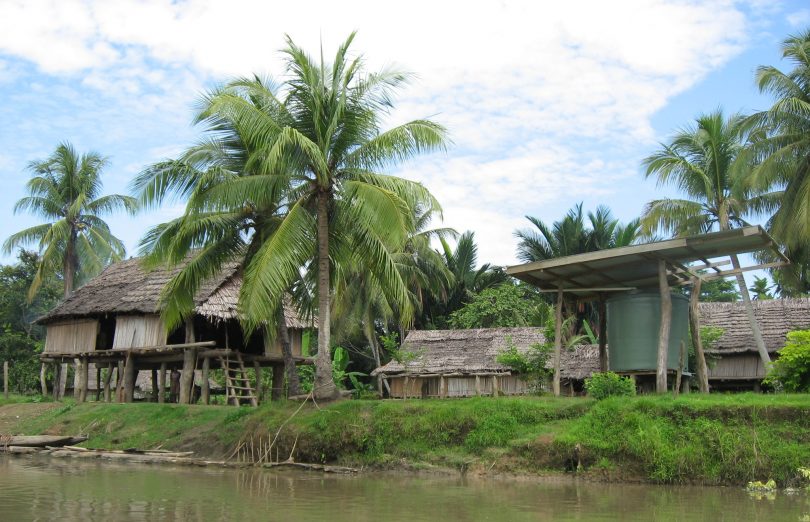In popular discourse within Papua New Guinea (PNG), the nation is regularly portrayed as a rich country endowed with valuable natural resources that should ensure high standards of living for its population. Yet this promise remains elusive, and there are great extremes of wealth and poverty.
In a chapter of the newly published Papua New Guinea: government, economy and society, we survey the literature on one aspect of development: livelihoods and economic activity in PNG. We do so to tease out the complexities that incubate uneven development and, in turn, we highlight some of the key historical, geographical and demographic trends that policymakers should keep in mind when assessing the potential for improving the lives of PNG’s growing population.
First, we highlight the importance of thinking about the complexity of development processes. We suggest it is important to move beyond indicators that compare PNG against other states, or rank the country’s subnational territories. While we note that these are important, our focus is on how natural geography and recent history shape relationships, places and spaces that determine development outcomes. This brings to the fore two key concepts for understanding uneven development in PNG: networks and enclaves.
Networks are important because many of the country’s citizens maintain connections with their families across the country. Livelihood opportunities are also fluid, and shift within and between administrative boundaries. For example, while urbanisation has risen over the past 40 years, many urbanites continue to have strong relations with their rural communities, and move back to rural areas to start businesses or look after family. This movement shapes social, economic and cultural activities and, in turn, opportunities for development.
Examining development enclaves is important because economic activity is often concentrated in very specific places. For example, mining and logging operations cover a small portion of the provincial or district land on which they operate (even though the materials they produce are exported around the world). Very often, these operations are shaped by the relations between the company and surrounding community, with limited engagement of state officials.
Second, our analysis shows that, due to low urbanisation levels (PNG is the least urbanised country in the world) and rural poverty, policies that seek to address PNG’s lack of economic opportunity will, for many years to come, need to focus on the unique issues facing rural communities. This brings with it additional difficulties because, due to the challenges of geography, land tenure and security, providing services and job opportunities to rural citizens is often more expensive than in urban areas. To overcome these difficulties, some have suggested that more needs to be done to reallocate resources to rural and remote areas.
Given the paucity of economic opportunities, and that the majority of votes are in rural and remote areas, the pressures for politicians and others to decentralise administration and funding to local levels of government are likely to continue. The localised politics of distribution – which over the past few years has intensified through, for example, the rise of constituency funds and increased autonomy of district administrations – will likely remain.
Third, when it comes to economic opportunities, the country is moving into a distinctly different era than the one that has shaped its uneven development over the past decade. As our co-authors have shown, the country’s revenue base has recently diminished. Over the past decade, the optimism that came with higher levels of revenue and the promises of large-scale natural resource projects justified PNG hosting a range of events that shaped its urban and rural spaces. For example, in recent years the country hosted APEC, the FIFA U-20 Women’s World Cup and the Pacific Games, which led to significant restructuring of urban spaces and, for a short time, opportunities for employment, particularly in the hospitality and security industries. For now, it is unlikely PNG will reshape its urban and rural spaces as dramatically; and it is thus even more important to look at investing in small-scale livelihoods opportunities.
In our chapter, we go into far more detail about these and other factors that shape uneven development in PNG. However, after examining the literature, the three issues we highlight above appear to play a particularly central and sometimes under-analysed role in determining the nature of uneven development in the country. Thinking about these issues will be important if we are to better understand the complex nature of development in PNG.
Read Chapter 7, Uneven development and its effects: livelihoods and urban and rural spaces in Papua New Guinea.
Download, for free, the entire volume Papua New Guinea: government, economy and society.
The authors will present their findings as part of the ANU-UPNG seminar series, in-person and online, on 25 March, 1:30 – 2:30pm (AEDT). Registration required.
Disclosure
This research was supported by the Pacific Research Program, with funding from the Department of Foreign Affairs and Trade. The views represent those of the authors only.


Leave a Comment